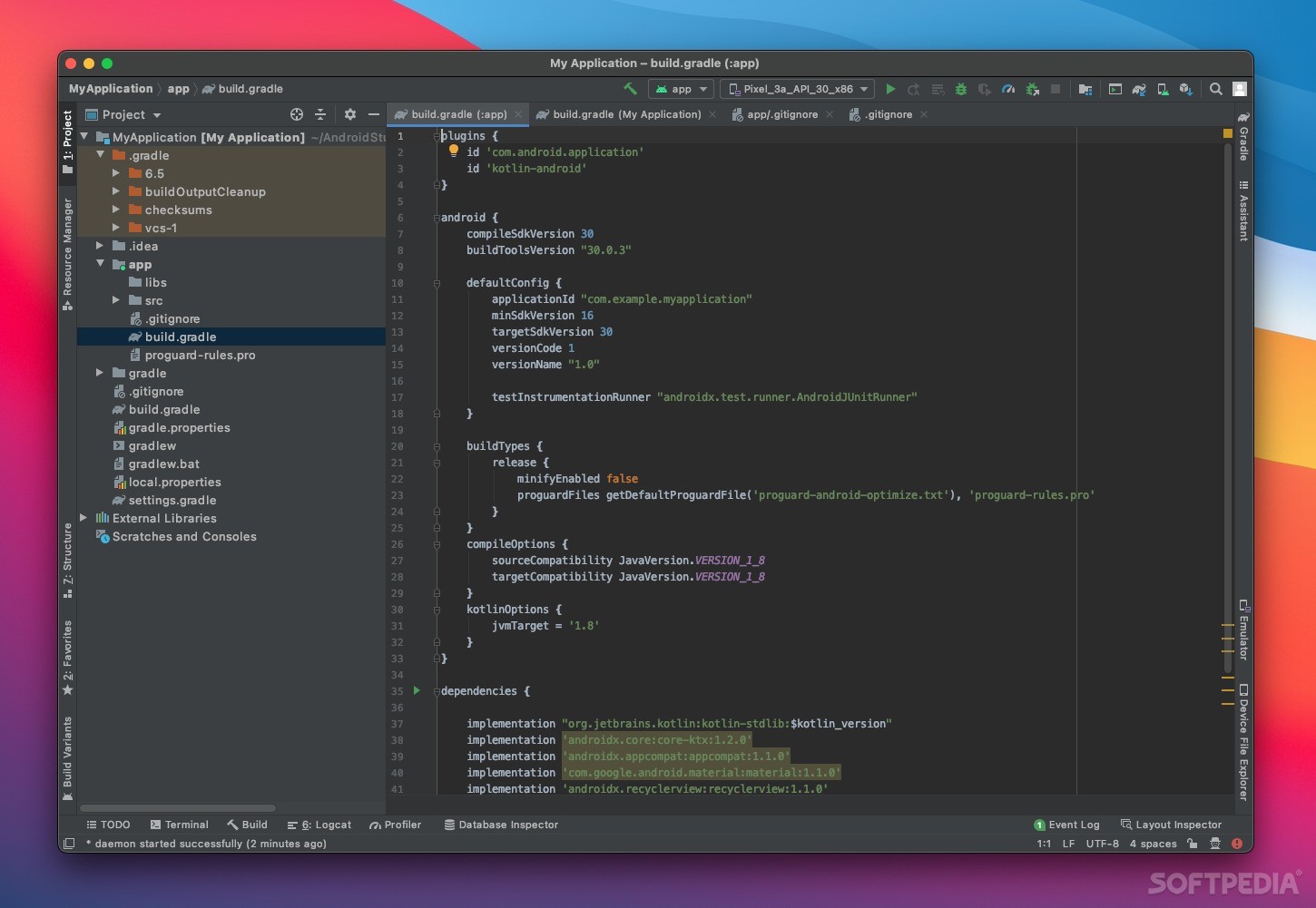

BUG-000134159: Ordering fields by Order By Fields.Add(order By1) in a mobile map package (.mmpk) with 40,000 features fails with an error.
Android studio 4.2 release notes update#
Question on Esri Community Changing Opacity of a Surface without Basemap doesn't update on screen. Question on Esri Community WMTS layer fails to load with "Invalid argument: tile info origin must have a spatial reference". Issues addressed in this release are listed below. The projection algorithm has been added as a new variant to the Hotine oblique Mercator projection. This is expected to cause about 4 cm offset in the center of the Swiss projected coordinate systems (affected WKIDs are: 2056, 21780, 2172). Projection mathematics for the Hotine oblique Mercator projection and the Rectified skew orthomorphic projection have been modified to fix an issue with ☙0° azimuth cases. You can use them to transform to or between gravity-related vertical coordinate systems for the following areas: Belgium, Estonia (geoid file distributed by AlphaGIS, Estonian distributor), Italy (EVRF 2019), Latvia, Lithuania, Switzerland, Tasmania (Australia), Ukraine (EVRF 2019), and United Kingdom (HS2-VRF). Several new vertical transformations based on geoids, quasi-geoids, or other conversion grids are available. They now have code-change entries to their official EPSG WKID numbers. Five GDA2020 transformations were affected and had been given Esri WKID numbers (108xxx). This allows us to use the 8xxx values for new EPSG entries. 
The code-change entries that used 8xxx (and which no longer exist in the EPSG registry) were removed at this release. EPSG has started reusing the 8xxx numbers, although only a few objects so far have been affected. Esri kept the previous WKIDs in case someone was using them, but ‘code-changed’ the objects to use the official WKIDs. This included a large group of geographic transformations where the ‘old’ WKIDs were in the 8xxx range. They added corrected entries with new well-known IDs (WKID). Many years ago, the EPSG registry ( ) deleted entries that had problems.
A rotation value was fixed in 8827, Camacupa_2015_To_RSAO13_1. The WKIDs and transformation methods were updated for CR05_to_CR-SIRGAS_1 and CR05_To_WGS_1984_2. The transformation method was fixed in 1825, Hong_Kong_1980_To_WGS_1984_1. Several edits were made to geographic transformations: The Luxembourg 1930 name was updated to LUREF which affected geographic and projected coordinate systems and several transformations. Projected coordinate systems for Mars and the moon were also added. Several planetary satellites and extraterrestrial bodies had updated definitions added based on the IAU/IAG 2015 publication. The following changes have been made to coordinate systems, map projections, and geographic transformations: IndoorsLocationDataSource will no longer output the last known position when a position cannot be estimated. The timestamps for indoor location data source positioning output are now correct for estimated positions. IndoorsLocationDataSource will no longer send warnings that are not relevant to the diagnosis of indoor location data source issues. 
Floor level estimation is now more accurate.Positioning accuracy has been improved when the location data source switches between GNSS and IPS.The display presents fewer horizontal/sideways jumps and drifts and follows the user's actual position more precisely. Indoor positioning output that does not use path snapping is now more stable.This release includes several improvements to indoor positioning system (IPS) accuracy. With release 100.15, the indoor location data source can use positioning files up to 300 MB. In previous releases, the IndoorsLocationDataSource did not always work effectively on all platforms when using large positioning files (30 MB or more).







 0 kommentar(er)
0 kommentar(er)
